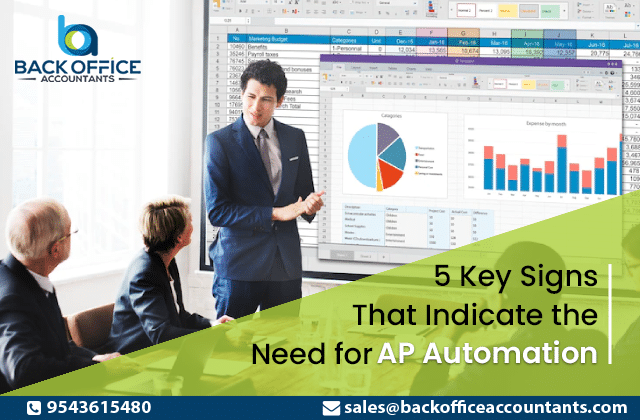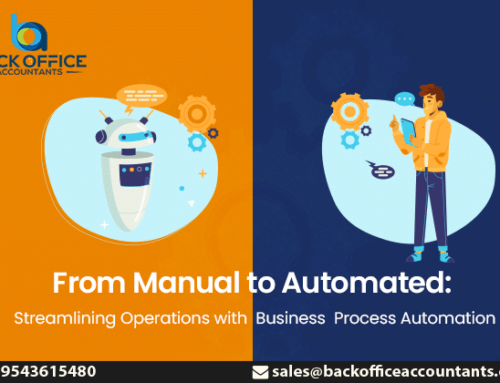The financial operations of a business must be handled by an experienced finance team. These operations include tasks such as invoicing, payments and budgeting. As a business grows, the number of financial transactions increases which can cause issues like errors, delays, and inefficiencies.
One way to address these issues is to use Accounts Payable (AP) automation. This technology streamlines and automates many of the manual tasks involved in processing invoices and payments.
Implementing AP automation can greatly benefit the finance team by reducing the time and effort required to process invoices and payments. This leads to improved accuracy, faster processing times, and increased efficiency. Additionally, AP automation can help to improve compliance, reduce the risk of errors, and increase visibility into the company’s financial operations. Despite these benefits not many business leverage AP automation to level-up their AP. If you are business that is still unsure about AP automation then this blog is for you.
At Back Office Accountants we regularly work with clients that are looking to automate their Accounts Payable. There are a few common signs that almost all businesses go through before they decide to plunge into AP automation. If you are experiencing the following signs then it is high time to consider AP automation seriously:
1. High Volume of Invoices
Firms that operate in sectors such as retail, manufacturing, and logistics frequently handle a large number of invoices regularly. Even though your team has worked diligently to ensure all financial records were accurate and up-to-date, handling these invoices manually can be both time-consuming and prone to errors, which can cause delays in the processing of invoices and payments. This can lead to penalties for late payments and negatively affect supplier relationships.
To overcome these issues, organizations can implement Accounts Payable (AP) automation to automate tasks such as data entry, invoice matching, and approval routing. This not only helps speed up the process but also allows the finance team to focus on more important tasks such as analysis and reporting.
2. Lack of Visibility into Cash Flow
Manual invoice processing can make it difficult for finance teams to have real-time access to information about invoice status and payment history. The lack of visibility can make it hard for teams to make informed decisions about when to pay invoices and negotiate with suppliers.
With AP automation, teams can gain real-time access to this information, providing them with greater visibility into the company’s cash flow and giving them the ability to make more informed decisions. Other benefits of AP automation include.
- Improving decision-making, cash flow, and supplier relationships
- Reducing errors and increasing compliance with accounting standards
- Speeding up the invoice processing and payment process, leading to increased efficiency
- Reducing workload for finance teams, allowing them to focus on more strategic tasks.
3. Difficulty with Compliance
Companies are required to follow strict regulations such as the Sarbanes-Oxley Act and the Payment Card Industry Data Security Standard (PCI DSS) to maintain control over financial information. However, manual invoice processing can make it difficult to ensure compliance and secure sensitive financial information.
Accounts payable automation can assist in ensuring compliance by automating the approval process and securely storing financial information. Accounts receivable automation can be used to manage and collect payments from customers efficiently.
4. Inefficient Manual Processes
Manual processes are those that are carried out manually, rather than through the use of technology. These tasks may encompass a variety of activities, such as data entry, the comparison of invoices to purchase orders and receipts to confirm accuracy and completeness, as well as routing invoices to the correct individuals for review and approval. Back office accounting firms provide accounting and bookkeeping services which help with these problems.
AP automation, on the other hand, is a technology-based solution that streamlines manual processes. It can automate tasks such as data entry, invoice matching, and approval routing, which helps to reduce errors and increase the efficiency of the finance team. This can ensure invoices and payments are processed on time, improving supplier relationships and reducing the likelihood of late payment penalties.
5. Difficulty in Tracking and Reporting
Manual invoice processing can make it challenging for a finance accounting team to track and report on key financial metrics such as cash flow, supplier performance, and invoice ageing. AP automation can provide real-time access to this information, giving the finance team valuable insights into the company’s financial health and helping them make more informed decisions.
In conclusion, finance teams may benefit from implementing accounts payable automation if they experience an increase in manual errors, a high volume of invoices to process, a lack of visibility into the accounts payable process, difficulty in tracking invoice status, and a strain on resources. By automating these processes, finance teams can improve efficiency, accuracy, and visibility while reducing costs. If you are a business that is considering to automate your AP right now, our AP experts at Back Office Accountant can help.
A leading outsourcing company in the accounting and bookkeeping industry, Back Office Accountants, can assist organizations in implementing AP automation and streamlining their finance operations. With our dedicated expertise and experience, our AP experts can help businesses take advantage of the benefits of automation and improve their bottom line. For more information you can contact us here: https://www.backofficeaccountants.com/







